

MIL MI 26 T
Helicopter
The art of making
a catamaran fly.
This August, an unusual event combining water sports and
aeronautics
took place in the Swiss Alps and more particularly in the canton of
Vaud. Indeed, the Mil Mi 26 T helicopter came to transport the Alinghi
Team new catamaran from Lake Geneva in Switzerland to Italy to launch
it on the Mediterranean Sea. Then how couldn’t someone be
interested in a flying machine capable of such achievements?
MIL MI 26 T: the birth of a
monster.
Mil Mi 26 T
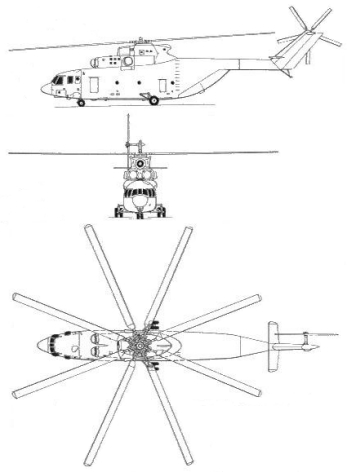
To trace the origin of this tremendous aircraft, you have
to
know about the topography of a county; Russia. The immensity of this
land and the many inaccessible areas create the need for a reliable
means of transport capable of working in harsh conditions. So MIL
Hélicoptère Industrie meets the Russian demand by
constructing heavy helicopters capable of lifting heavy loads
internally and externally.
The precursor of the MIL MI 26, the MI-6 (NATO codename
“Hook”), was born in 1954. This first aircraft was
intended
to cover every demand from the OKB (experimental design bureau)
concerning the creation of a helicopter capable of carrying an 11-ton
load over 240 kilometers. Thereby it will be particularly useful for
the operations in Siberia where road transportation is hard in these
extreme conditions. The helicopter was designed for military as well as
civilian use. When the MIL MI 6 Hook went into production, it was
powered by Soloviev D-25V turbines at 5550 SHP each and a five-blade
rotor with a 35-meter diameter.
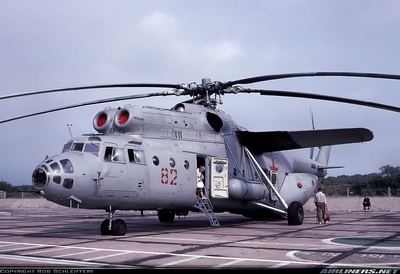
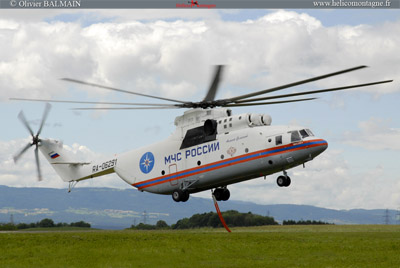
Mil Mi 6 Hook and
MIL MI 26T
The MIL MI 26 (NATO codename “Halo”) was first seen
flying
in 1977. This aircraft went into production in 1980. Up to now, about
300 Halos have been built. When you look at the MI 6 and at the MI 26,
you can notice a resemblance, but the MIL MI 26 is 66% more powerful
than the MIL MI 6 although it is heavier. The MI 26 can carry a 20-ton
cargo, can take 82 people on board or contain 60 stretchers. It is
powered by the LOTAREV D-136 turbines at 11550 SHP each. The MI 26 is
the only helicopter in the world to operate with an eight-blade main
rotor. The rotor blades are made of composite material, and the rotor,
with a 32-meter diameter, is made of titanium. Its maintenance is
simplified which makes the operations in remote areas easier. The MIL
MI 26 is equipped with a 119 kW auxiliary turbine, the APU TA-8V, to
provide the electrical and the hydraulic power that help the two
LOTAREV turbines start up. Its loading capacity in the hold is
comparable to the one of the American C130 Hercules military transport
aircraft. It is equipped with cargo doors to make the loading of
vehicles easier. The crew is composed of five men: the pilot, the
co-pilot, the electrical engineer, the navigator and the loadmaster.
The MIL MI 26 Halo is in the Russian tradition of heavy helicopters and
remains the most powerful helicopter on Earth. The modernization of
this helicopter is under consideration until 2011 in order to provide
modernized all screen aeronics and a crew reduced to three people.
France and Germany are evaluating this aircraft and are interested in
it for their armies.
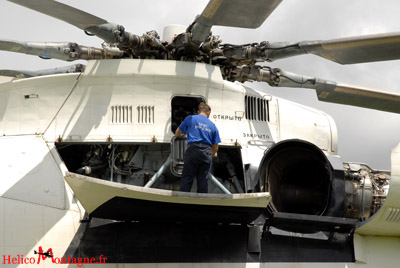
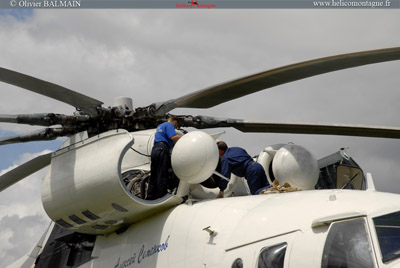
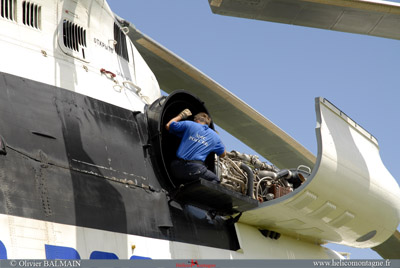
Mecanics views of Mil Mi 26 T
Panoramic Hight Definition

Clic
for zoom
Technical characteristics
| Pays d'origine : | Russie |
| Constructeur : | Mil Mi |
| Date d'introduction sur le marché : | 1983 |
| Rôle : | Transport / Cargo |
| Nombre de pale principale: | 8 pales |
| Diamètre du rotor : | 32 mètres |
| Nombre de pales anti couple : | 5 pales |
| Diamètre de l'anti couple : | 7,6 mètres |
| Longueur rotor tournant : | 40 mètres |
| Longueur du fuselage : | 33,5 mètres |
| Hauteur : | 8,2 mètres |
| Dimension du compartiment cargo : | 12 mètres |
| Hauteur de la soute : | Variable de 2,9 a 3,2 mètres |
| Dimension du compartiment cargo : | 12 mètres |
| Masse : | 49,500 Kg |
| Masse maximale : | 56 000 Kg |
| Poids à vide : | 28,200 Kg |
| Charge à l'élingue : | 20 000 Kg |
| Motorisation : | Lotarev D-136 11 |
| Vitesse maximale : | 295 km/h |
| Vitesse de croisière : | 255 km/h |
| Autonomie : | 475 à 800 Km suivant la charge maximale |
| Plafond de vol : | 4600 mètres |
| Fuel : | interne de 11,900 litres - réservoir supplémentaire en soute |
Mil
Mi 26 T 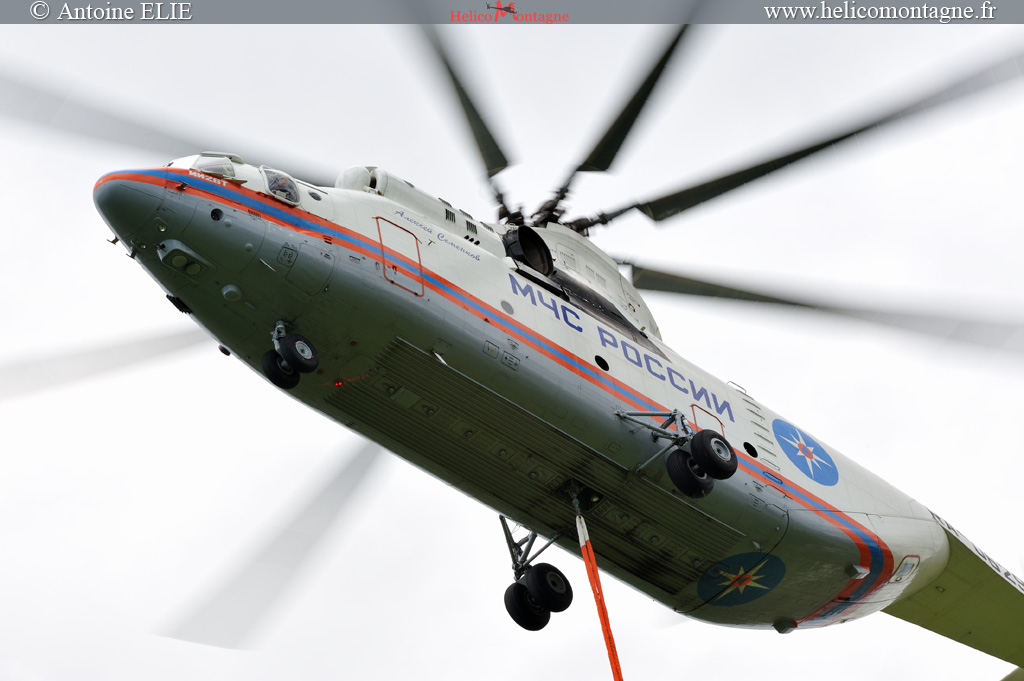 Russian Ministry of emergency situations RA-06291 |
|
Alinghi Team: on their way to a new victory?
The Alinghi Team was born in 2000 and they have a number of boat races victories to their credit such as the Louis Vuitton Cup in 2002 or more recently the America’s Cup in 2007. For the 2010 edition which will take place in the Persian Gulf in Ras Al Khaimah in the United Arab Emirates, the Alinghi Team built no ordinary catamaran: it is 27.4 meters long, 52 meters high and weighs 12 tons. The mast alone weighs 2 tons. The boat was built in the Villeneuve suburbs, 300 km from the first sea as the crow flies.
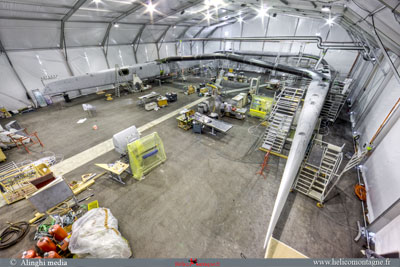

Air help for this powerhouse
Before sailing to new achievements, there was a technical challenge left to be taken up by the Alinghi Team this summer 2009: finding out how to lift a 10-ton catamaran from the Villeneuve shipyard to Lake Geneva for try-outs, and then to the Mediterranean Sea in Genoa, Italy.
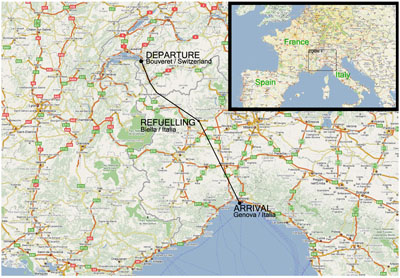
The road transportation was impossible as well as the river transportation, the river not being wide enough. The only solution was the air route. But Lake Geneva is 300 km from the nearest sea, and between the lake and the sea, there is the European highest mountain chain: the Alps. Alinghi asked the Heliswiss International company, air lifting specialist, for technical solutions. The solution came from the East, from a terrific helicopter built by the former Soviet Union: the MIL MI 26. The MIL MI 26 is a state machine belonging to the Russian ministry for urgent situations. The aircraft came straight from Russia, near Moscow. It landed at Lausanne Blecherette Airport in Switzerland on July 4th 2009.

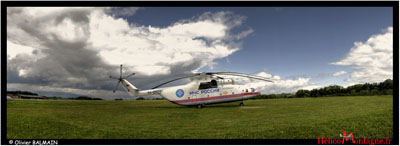
The boat was to float on Lake Geneva five days later for its first try-outs and was to be christened at the same time. The transportation was planned for July 9th at small hours, but the weather conditions were not favorable: therefore the operation took place in the late afternoon. In the morning, a Kamov KA 32 A12 from the Heliswiss International company carried the mast all the same, which was in some way a foretaste of what was awaiting the MIL MI 26 T.
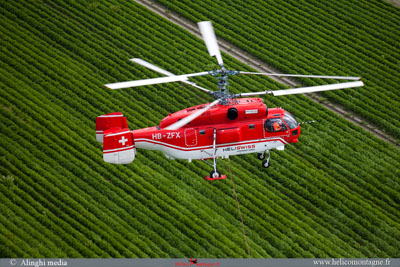
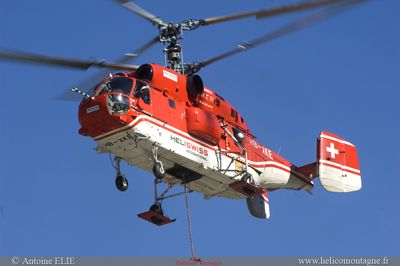
The Russian heavy helicopter carried the boat successfully to Lake Geneva: the operation went quite fast because the boat was only a few-minute flight from the Alinghi 5 catamaran’s temporary home port. The try-outs on the lake could start! They lasted a month.
On August 7th 2009, early in the morning, the Heliswiss International company and the Alinghi Team were ready for the most difficult mission of the Alinghi 5 program: carrying the boat from the Bouveret port in Switzerland to Genoa in Italy. At about 7:30 a.m., a Super Puma AS 332 C1 from Heliswiss International transported the mast and opened the way for the MIL MI 26 an hour early I order to give the Russian crew the instructions concerning the weather. The onlookers packed quickly on the lakeshore to wait for the flying crane.
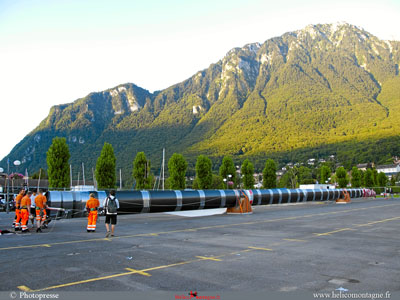
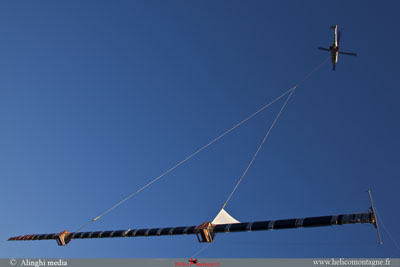
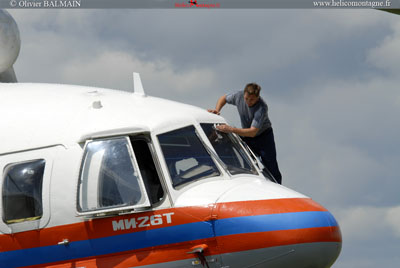
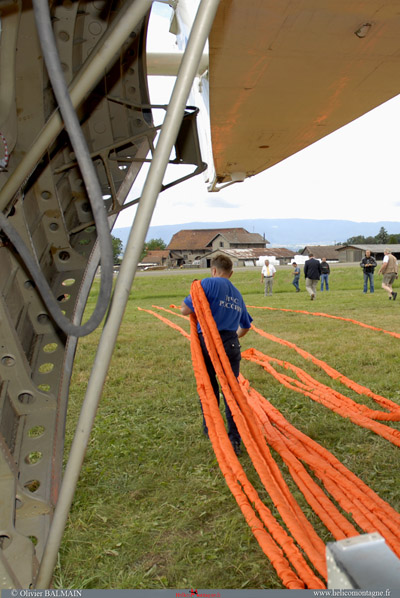
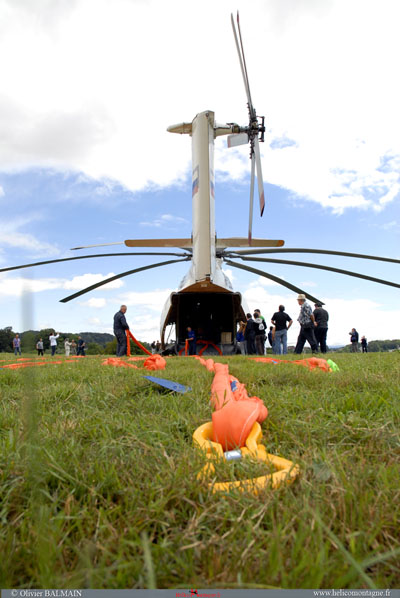
At 9 p.m., the machine finally arrived. The technical crews were already waiting on the boat to hook the four binders of the 60-meter-long sling. The maneuver was tricky because the boat was on the water and the blow of the giant did not help the stowing operations at all. The hanging of the boat to the sling lasted seven minutes. Once it was done, the pilots started slowly pulling the boat out of the water.
That was it; here they went for a 300 km transportation lasting approximately four and a half hours over the Alps, sometimes flying at a height of almost 3000 meters.
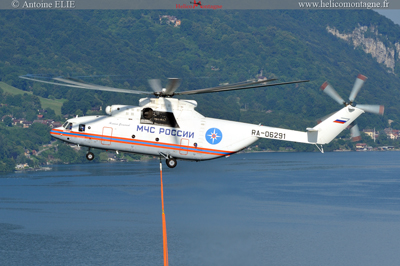
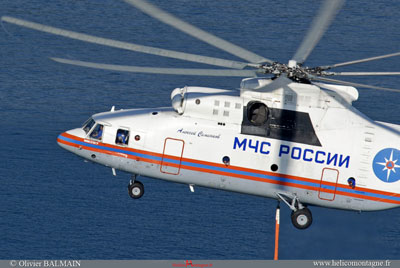
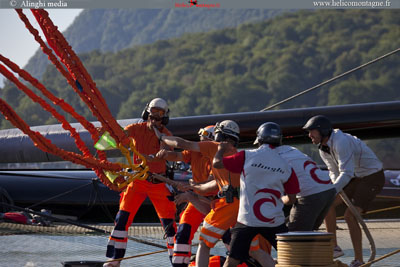
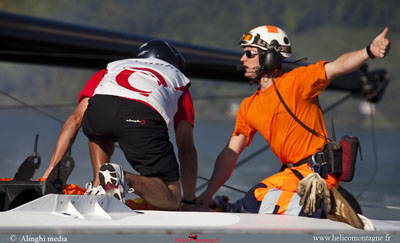
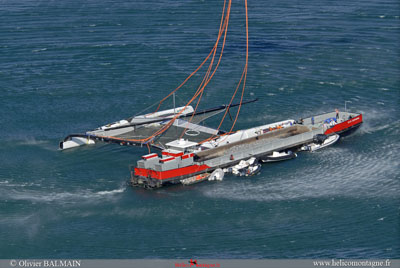
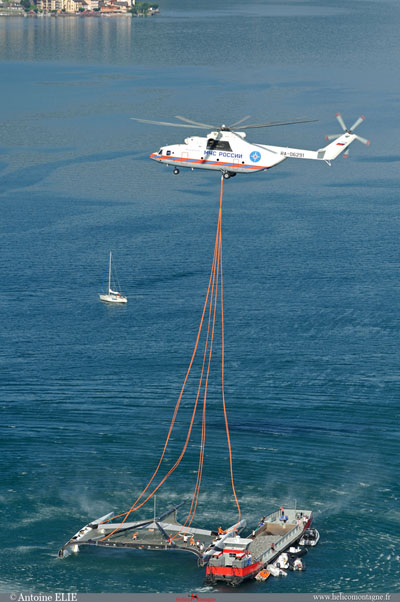
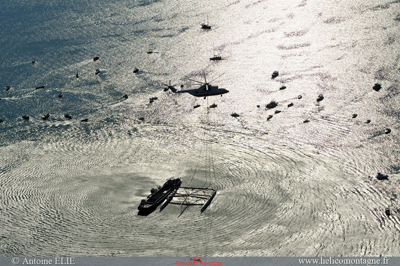
The helicopter had to avoid flying over dwellings and buildings. The way was almost a straight line from Switzerland to Italy. The biggest difficulty for the pilots was to make sure that the catamaran hanging from the helicopter would not start rotating. Of course, many calculations had been previously made by the engineers to determine the flight speed and the length of the slings that should be used. The catamaran was equipped with a small parachute at the rear so that it would remain in line during the transportation.

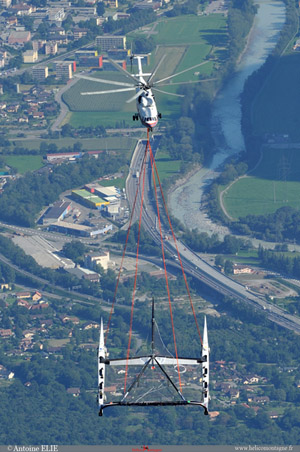

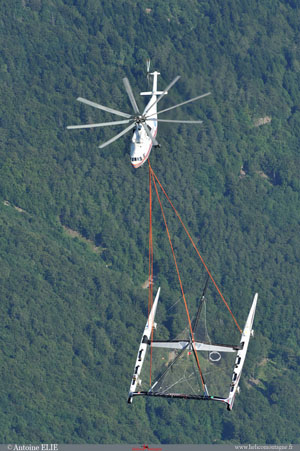

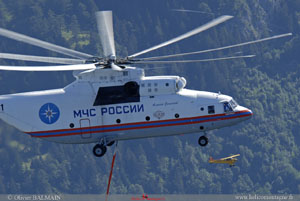

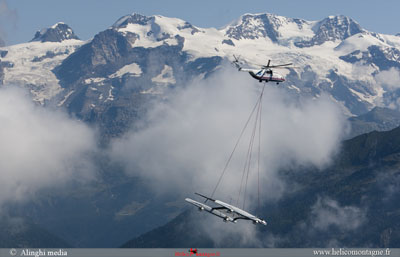
Halfway, at the Biella airport in Italy, the helicopter had to make a stop to fill up the tanks that had only been filled with 10000 liters of fuel oil to ensure enough power for the route over the Alps. A ground crew was already there to make sure that the landing of the boat would go smoothly.
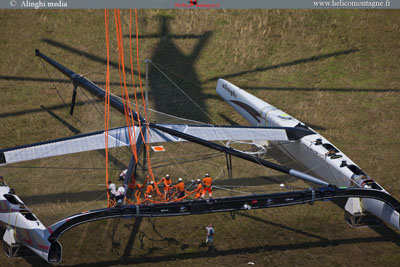
Soon after 2 p.m., the precious load finally arrived safe and sound in Genoa.

The MIL MI 26 will take the same route for its way back to the Lausanne Blecherette airport in order to retrieve some equipment left there for the mission, and above all, to put the additional tanks back which would enable the aircraft to go back to Russia with not less than 30000 liters of fuel oil.
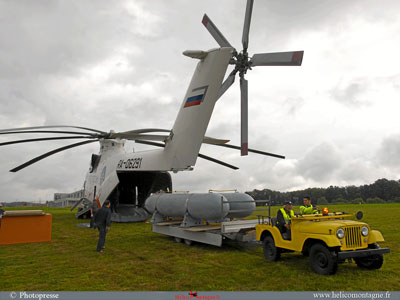
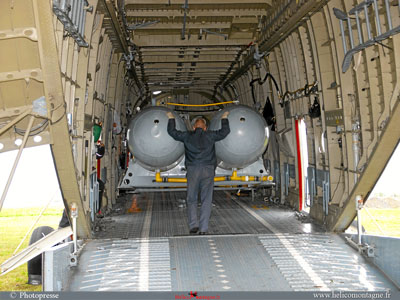
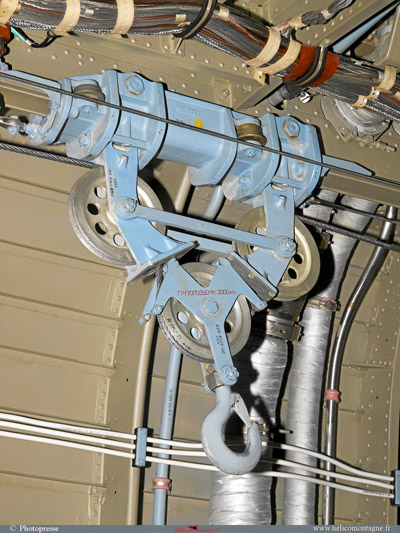
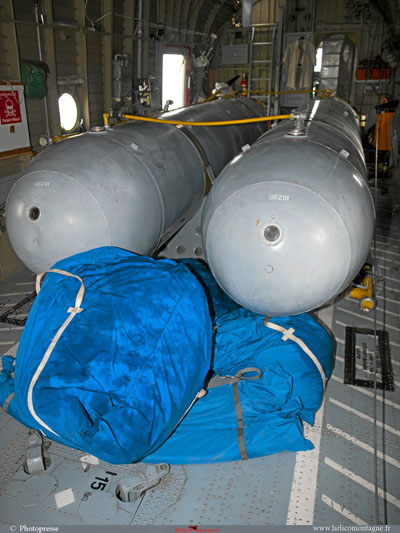
This operation attracted many onlookers to admire the air monster as well as the Alinghi 5 catamaran’s first flight before its baptism of fire for the America’s Cup in February 2010. This unusual operation requested months of calculations and various permissions for both countries. As far as the Russian crew is concerned, it was one more successful mission. Back in their country, they will move on to a deserved rest among their families. NEXT MISSION: forest fires in Greece.
LESVIDÉOS
Copyright : helicomontage,
Alinghi Carlo Borlenghi, Photopresse, LCI, Alinghi TV.
Remerciement à Alinghi communication Espagne, Photopresse,
HeliAlps - Jean-Luc, l'équipage du Mil Mi26, OPS Helisiwss.

Réalisation
Balmain
Olivier et Elie Antoine











